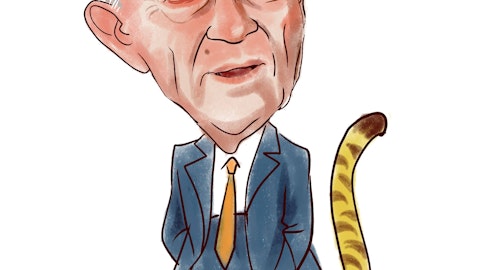So look — and as I discussed, I think in some detail, while we did have charge offs that exceed our expectations in 2022 and probably going to persist into 2023 and a little bit into 2024. We don’t think that that has had a major impact on our life of loan expectations, which is certainly what investors will factor into their pricing on the product. In our guidance, we were a little bit conservative in terms of the premiums that we expect to receive. And I don’t want to start negotiating against myself here. So maybe I shouldn’t even brought that up, but we are very optimistic that we will be able to execute some very strong loan sales. And finally, I will point out that there are many, many interested buyers continues to grow as we steadily sell $3 plus billion of loans each year.
So we are very encouraged and looking to get the process rolling now that we have released earnings.
Moshe Orenbuch: Great. Thanks. And I’ll get back in the queue.
Operator: Thank you. Our next question comes from Mark DeVries with Barclays. Your line is open.
Mark DeVries: Yes, just one follow-up on those comments, Steve, on the gain on sale margin assumed in guidance. Is it kind of consistent with the last sale or when you say conservative, potentially lower than that? Or how should we think about that?
Steve McGarry: I prefer not to give any further specificity on that front Mark.
Mark DeVries: Okay, fair enough. Next question is just on cosigner rates. Well, I think you alluded to it being kind of consistent. I think it’s been steadily migrating down over the last several years. Can you just talk about what’s driving that? And also what share of kind of the charge offs and delinquencies are coming from the population of loans where you don’t have a cosigner?
Jonathan Witter: Mark, let me take the first part of that question. We have not seen material changes in our cosigner rate on what I would describe as sort of a mix adjust basis. So when you look at sort of the various types of schools and you look at the population of those schools, we have not seen a change there. I think the biggest change that we have seen is a growth in a sort of a different set of programs, which tend to attract oftentimes older and more established credit risks customers who don’t in fact need a cosigner to support the underwriting decision. So, a great example of this is, think about the 20, 26 year old individual recently got out of the (ph) services has decided to go back and get their degree, that’s a pretty good indicator of the kind of person that would not have a cosigner.
And so, I think the sort of steady drift down that you’re referring to, we have not noticed patterns of that as we normalize for the underlying segments of customers. I do not have — Mark, let me ask Steve, if you do views on sort of the specific cosigner, non-cosigner default rates. We can certainly follow-up on that Steve if you don’t have that.
Steve McGarry: Look, we obviously pour over the full stats every quarter and there has been no meaningful move in the percentage of defaults that come from cosigned versus non- cosigned. And in reality, I think we went from 87% to 86% over the last couple of years. So it hasn’t been really a big mix shift in that either.
Mark DeVries: Okay, got it. Thank you.
Operator: Thank you. Our next question comes from Michael Kaye with Wells Fargo. Your line is open.




